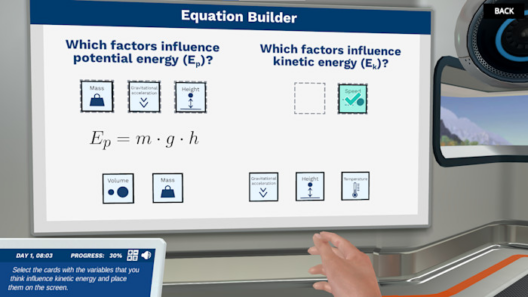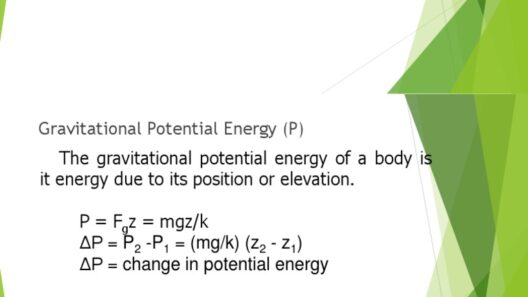When pondering the realm of physics, one might casually ask: “Is mechanical energy always conserved?” This seemingly straightforward query unravels a tapestry of complexities that underlie the principles governing the universe. To answer such a query, one must delve into the intricacies of mechanical energy, its various forms, and the fundamental laws of physics that dictate its behavior.
Mechanical energy, defined as the sum of potential energy and kinetic energy within a system, operates according to the principles set forth by classical mechanics. Potential energy, the energy stored within a system due to its position or configuration, contrasts with kinetic energy, the energy of motion. In many isolated systems, where external forces exert no influence, mechanical energy can remain constant. However, this is contingent upon specific conditions that merit exploration.
First, let’s consider the conservation of mechanical energy in ideal conditions. The law of conservation of mechanical energy states that in an isolated system, where only conservative forces — such as gravity — act upon it, the total mechanical energy remains unchanged over time. For instance, envision a pendulum in a vacuum. As it swings, kinetic energy transforms into potential energy at its apex and back to kinetic energy as it descends. This interplay seems to resonate with the harmonious rhythm of eternal conservation. But, the real world is rarely devoid of influences that could perturb this equilibrium.
In practical scenarios, friction and air resistance often intrude upon our idealized models. These non-conservative forces dissipate energy as thermal energy, thus disrupting the conservation of mechanical energy. When a car travels along a road, the kinetic energy is not just converted back into potential energy when ascending a hill; significant energy is lost due to friction between the tires and the road and to air resistance. Therefore, while mechanical energy in this case is still conserved relative to the system (the car-object), it is not conserved in strict terms when we include external influences. This introduces an essential caveat: energy transformations may occur, but not without losses.
Further complicating our understanding is the role of non-conservative forces, like friction described earlier, which lead to irretrievable energy losses. Consider the example of a roller coaster. As it climbs a hill, energy is stored as potential energy, but as it descends, energy is not lost fully to the environment; rather, mechanical energy undergoes a transformation. Calculating the efficiency of such systems reveals that mechanical energy consistently exhibits evidence of ‘leakage’ in the face of real-world obstacles, thereby challenging the notion of absolute conservation.
Another paradigm to consider is the oscillatory motion found in systems such as springs or pendulums. These systems appear deceptively simple, yet they embody the core challenges associated with energy conservation. In an ideal spring-mass system, energy oscillates between kinetic and potential forms as it moves through its equilibrium position. However, in reality, every oscillation incurs diminishing returns due to energy lost to heat dissipation through internal friction within the materials, thereby leading to a phenomenon known as damping.
So how do we go about reconciling these seemingly contradictory notions? One pathway is to differentiate between the total mechanical energy of a system and the mechanical energy that remains accessible for work. In practical terms, while mechanical energy may not be conserved in the pragmatic world we navigate due to the perennial presence of non-conservative forces, systems can be analyzed through frameworks that account for energy transfer efficiency. Understanding ‘usable’ energy versus total energy further complicates the conversation about conservation. Here, we open the door to the principle of entropy, wherein energy disperses into less useful forms.
Beyond these classical scenarios, the realms of modern physics add layers of complexity to the discussion of energy conservation. Quantum mechanics presents a reality where energy does not act strictly in line with classical expectations. On a quantum level, energy can appear to flicker in and out of existence, raising profound questions about its permanence. Could there be scenarios wherein energy conservation itself blurs, especially when considering subatomic particles? While mechanical energy holds its ground in many macro-level applications, the advocacy for a universal conservation law morphs in the intricate dance of particles and waves.
In summary, while mechanical energy can be conserved under specific conditions, the interplay of both conservative and non-conservative forces invariably introduces challenges to the notion of absolute conservation. Factors ranging from friction and air resistance to the principles of quantum mechanics invite us to realize that the universe does not conform to a simple formula. Instead, it thrives on complexity and nuance, suggesting that while the conservation of mechanical energy may hold as a guiding principle in idealized conditions, the overarching reality is that energy assumes myriad forms. Thus, the inquiry into whether mechanical energy is always conserved leads us into a broader dialogue about energy’s transformative nature in the fabric of the universe. Clearly, the answer is a resounding maybe — the universe delights in keeping us on our toes.






